One of the most difficult parts of construction, and what separates the ok and the great general contractors is their ability to run a schedule for a project. In our experience, the best GC’s pick their sub-contractors at the beginning, make a schedule, and keep everyone updated through regular project meetings. One of the most common questions we get asked during the first part of planning is:
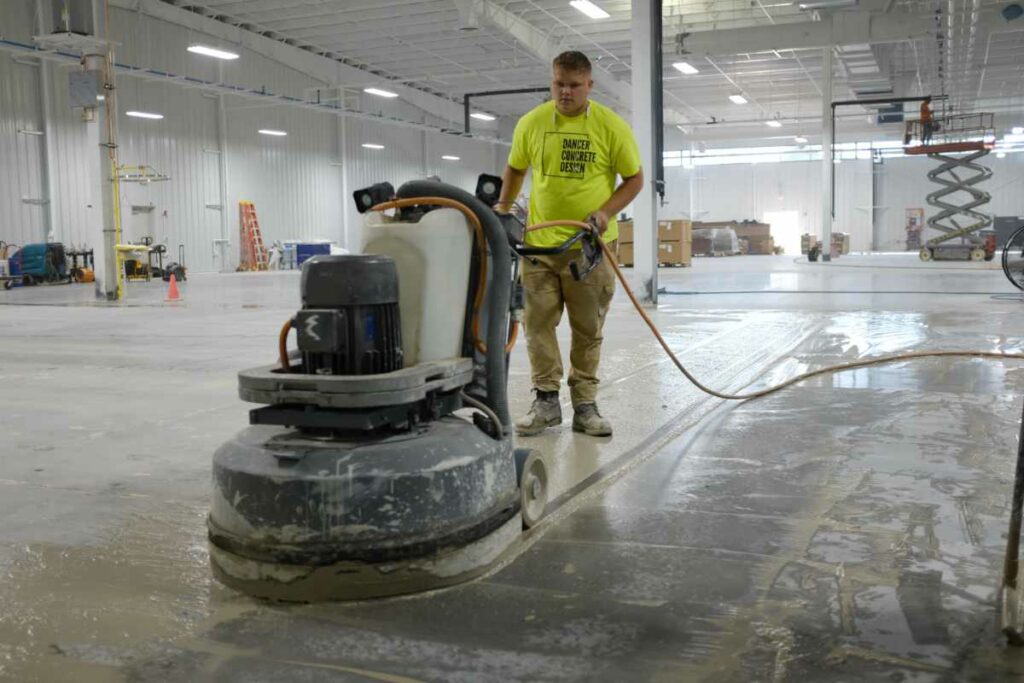
“When do you polish concrete?”
Is it right after the concrete is poured? Is it before or after walls? What’s the hard and fast answer for when to polish?
The honest answer, it depends. The floors we polish have a bit of variability to them, making each job unique. In general,
- MOST of our work is going to be done AFTER drywall and the first coat of paint and primer.
- BEFORE the final coat of paint, cabinets, trim, and doors.
But here are some exceptions.
- SOMETIMES we can do a bulk grinding pass BEFORE walls, and come back towards the end for final passes. Dependent on the project, and the final finish selected.
- SOMETIMES we can do all the work BEFORE walls are placed and the floor can be protected during construction.
There are key differences in polishing for remodel work and for new construction. Additionally, there are environmental factors to keep in mind.
REMODEL WORK
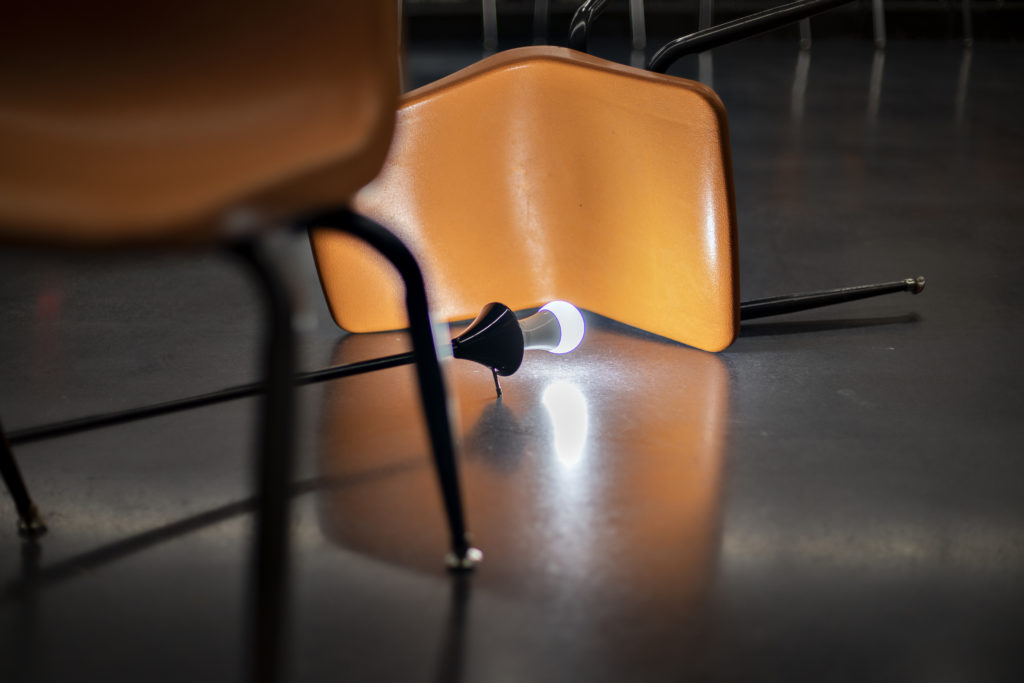
The concrete is already in place, the floors have been down for years, and we can polish and finish the floors just about whenever. We can polish the floors during the demolition phase, then cover the floor with a protective board. This lets construction continue without damaging the remodeled floor. We can also wait until after news walls are built; coming in towards the end of construction. We also may do some bulk grinding near the start and then come back towards the end for more of the finishing passes.
It’s all dependent on project durations, scheduling, and availability for things like power, lights, and water, which are usually more readily available on remodeling projects. Remodel work gives us many options. We also may have other variables such as cut out’s or trench patching to take into consideration.
The key factors for when we polish during a remodel are the availability of power, lights, water, and other essentials. The total project duration and scheduling are also important considerations for when to begin concrete polishing during a remodel.
NEW CONSTRUCTION
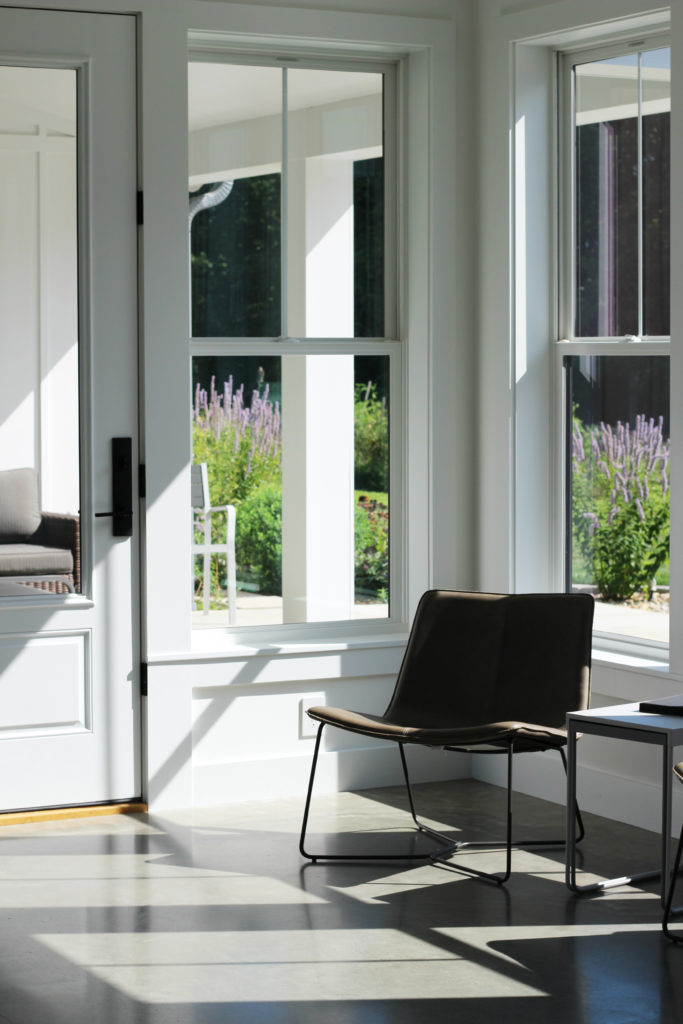
New construction brings a bit more specific needs to when to polish. The word ‘concrete’ is associated with site work and those preliminary steps in the construction project. We are finishing contractors just like drywall installers, painters, ceiling installers, and other flooring trades. Being finishers, we need a few more amenities to do the BEST WORK. On new construction work, we will typically need water, power, heat, and a ‘closed in building’ to get started on the finishing stages.
Have cold temperatures outside and it’s raining? That cold and rain soak right into the concrete surface. For our best work we need the slab acclimated to an indoor type of environment and to be free of outside moisture.
POLISHING TOO SOON.
Sometimes it’s better to wait…
It would be ideal to be able to finish all the concrete flooring in its entirety before any walls go in on new construction. The space is wide open, there is little edge and detail work. Everything seems to go faster and smoother until the end of the project.
The Joints
The concrete has now acclimated to the environment. The HVAC is on and the moisture has drawn from the surface. The concrete has shrunk and the joints have opened. Every one of those joints we filled now has a bit more space in them than they had before leaving a gap between joint filler and the wall of joint.
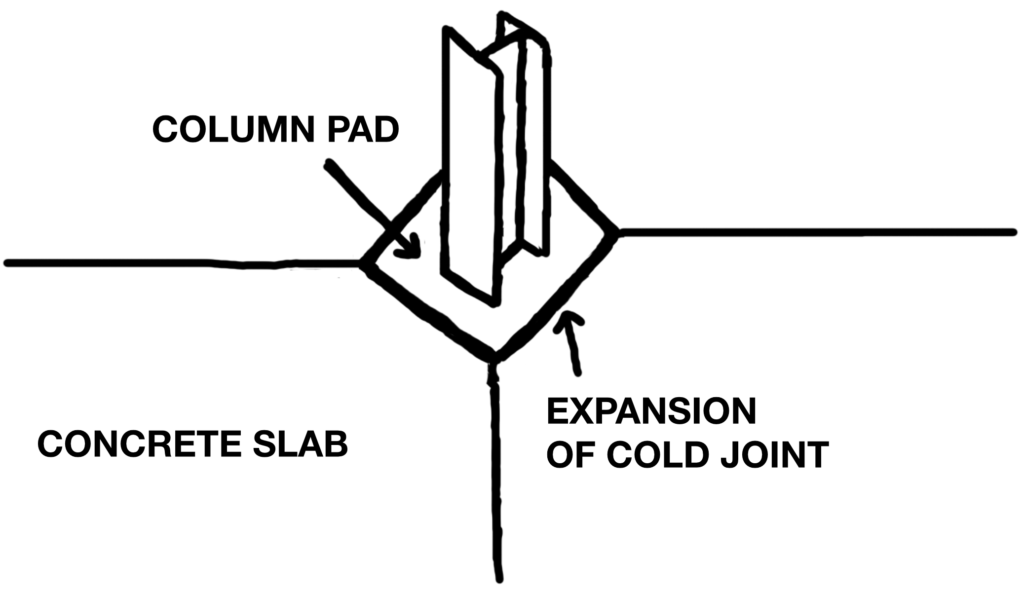
The Finish and Color
All the moisture that left the slab had to come out some way—it usually evaporates through the surface. That brand-new shiny concrete floor finish is now dull, flat, and hard to clean. The vivid color is now washed out. What gives? When that water came through the surface, it carried salts and minerals from the concrete through the finish. This has a dulling, or ‘eating away’, effect at the finish.
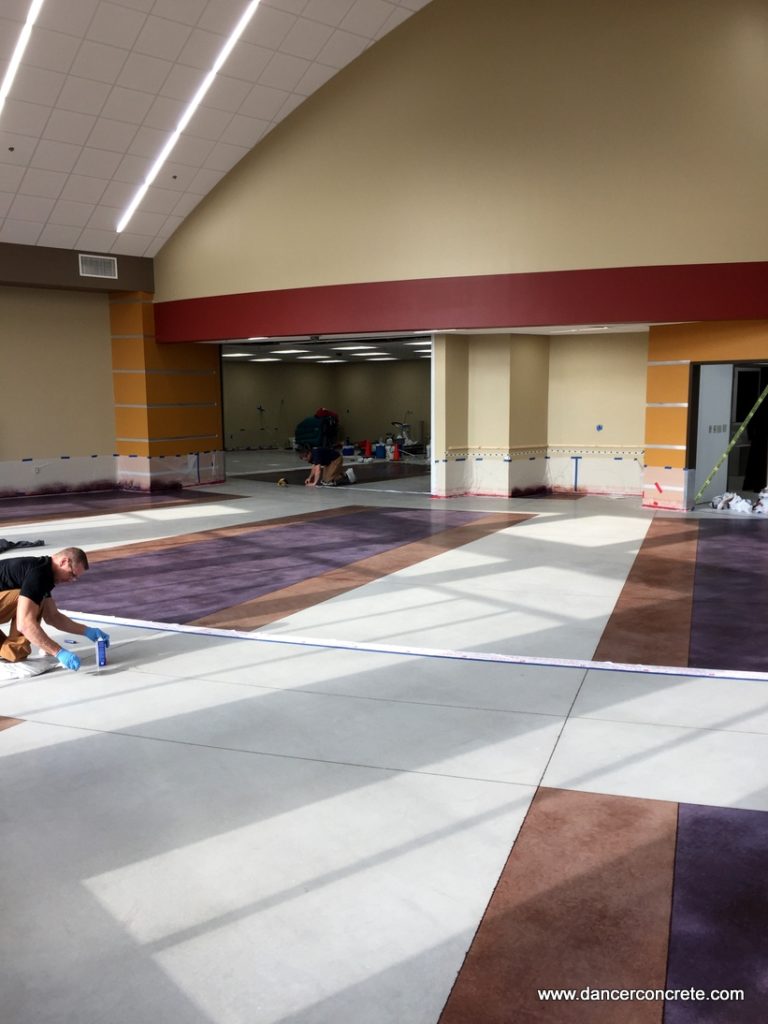
How do we know all this?
Because in our younger, more accommodating state, we did work when the GC wanted us to. This didn’t create the best product for the client. In our attempt to please, we said Yes, when we should have explained more, or said “Not Yet”. Being accommodating today can lead to being inconvenient later. We’d rather be inconvenient today, so the service and product we provide will stand the test of time.
In the end, we had to refinish our work, creating even more disruption, than simply waiting for the time to be right.
We are not trying to be difficult to work with. We just have to put the end client’s best interest first. They choose concrete floors for their beauty, for their durability, and their lifetime use. We, as the sub-contractor, need to be experts in our field to lead everyone to the best finish.
We share our experiences and set expectations so the general contractor, client, and end-user are all better for it. That’s how we help contribute to making win-win projects.
In each project, it’s best to coordinate scheduling and process with your project manager. They will know the best process and plan for your specific project. Get in touch with a Project Leader with any questions about your project.

